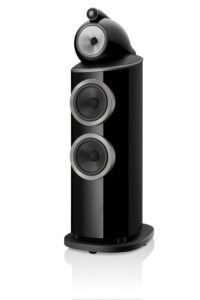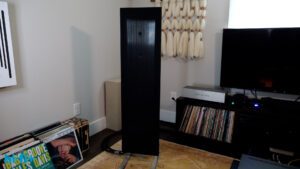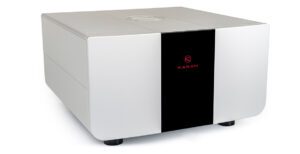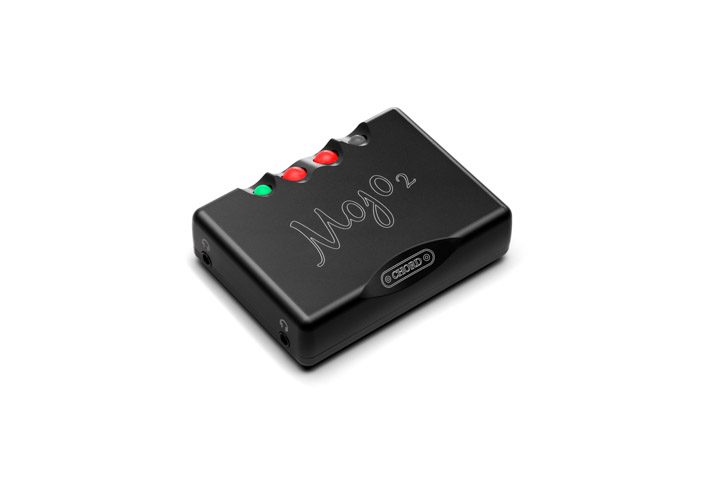
In an alarming “where does the time go” moment Chord Electronics has told us that it has been nearly seven years since they launched the Mojo portable DAC/headphone amplifier. I remember the launch at the Shard high above London Bridge station well, and the views from the toilets were spectacular! This time around there was no such ceremony; we live in restricted times but that hasn’t stopped Chord Electronics from making some pretty serious updates to its least expensive creation. That it has done so without significantly raising the price from the £399 it started out at is equally impressive in a world of silicon chip shortages and rising inflation.
Mojo 2 retails for £450 and remains a British made portable DAC and headphone amplifier that inhabits a solid aluminium case and is controlled by translucent spheres that change colour according to function. The new Mojo has a fourth button which is marked ‘M’ for menu and this provides an entry point to this model’s biggest advance over its predecessor; tone controls via DSP. This is a radical move to say the least, partly because tone controls are so unfashionable within hi-fi circles and significantly because no one else has done this on a portable DAC before. In fact, it’s hard to think of any DACs that have the sort of equalisation capabilities on offer in Mojo 2, Roon notwithstanding.
More than tone controls
This EQ isn’t a mere treble or bass adjustment such as is found on some amplifiers, it’s more of a shelf type of control which allows increases and decreases across frequency ranges, with bass adjustment at 20Hz, a 125Hz shelf, and mid and treble above a 3kHz shelf and at 20kHz. Chord Electronics has produced a video which better explains this but essentially it means that the output can be tailored such that headphones will produce a tonal balance that is either more neutral or more appealing, take your pick. Given that a flat response does not necessarily sound better end users are more likely to pick a response that makes their music more enjoyable through their headphones. It applies to the two headphone outputs which can also be connected to an amplifier so could be used to compensate for tonal variations in speaker and room acoustics.

DSP has been used to provide equalisation in a range of products for a number of years but our experience of it has rarely been positive, something is always lost when DSP is used to provide a more even frequency response. Chord Electronics’ digital design consultant Rob Watts points out that DSP doesn’t sound transparent, makes treble harder and loses detail resolution which results in a flatter sound. He explains that “Problem is that small signals lose amplitude accuracy, and the equalising DSP handles small signals differently to large signals as the signal fades into the resolution floor of the DSP. This creates a phase shift that is different for micro signals compared to large signals” and further that “The floating point nature of conventional 64 bit DSP means that it innately suffers from noise floor modulation”.
Watts has defined the specs required to achieve fully transparent EQ with DSP and they are both ambitious and mind boggling for the technically challenged so I won’t go into them, but will repeat that “small signal accuracy – needs to reproduce -301dB perfectly.” Which seems like a big number but is apparently what it takes to offer the degree of equalisation provided by Mojo 2. Another large number is the 705/768kHz required to ensure effective noise shaping, which means that low level signals do not get lost in the noise floor.
Complex Stuff
It’s complex stuff for anything let alone a portable DAC but Chord Electronics and Rob Watts appear to delight in cramming as much bleeding edge tech into their components as possible. The claim is that it runs “the world’s first lossless DSP”, and allows a wider volume range than the first Mojo of 126dB, so broad that it uses different coloured indicators to let you know whether you are in the high or low range, the change being made at -46dB which is slightly above the halfway point in output. There are of course more volume steps than colours available to indicate them so each colour represents a range of output levels with the maximum voltage being a substantial 5.3V. Headphone users might be interested to know that power output is 90mW into 300 Ohms and 600mW into 30 Ohms.
The four tone settings can be adjusted by plus or minus 9dB in 1dB steps and on top of this there are four crossfeed settings albeit one of them is ‘off’. Again the ‘polychromatic polycarbonate control spheres’ change colour to indicate the setting. Don’t lose the manual! Actually as the full manual is a PDF this isn’t really an issue.

Adjusting these settings requires a good memory and/or a user manual because you access them by pressing the menu button the requisite number of times to access a particular function then adjust that parameter with the volume buttons. For instance ‘menu’ button and ‘-’ volume allows brightness adjustment, or with the ‘+’ button to adjust crossfeed. Press the ‘menu’ button again for the 20Hz bass peak and again for the 125Hz bass shelf; it takes five presses to get to the 20kHz treble peak setting and the sixth press locks the controls. So absolutely no chance of confusion! It’s not all counting however, the menu button also changes colour to indicate what you are changing so that incompetent reviewers stand a chance of getting things right. In fairness, I’m not sure how Chord Electronics would make this easier without a display and that would raise the price and potentially cut its performance.
The Mojo 2 adds a USB C input to the micro USB (retained for Poly), on top of the minijack coax and Toslink array found on the first Mojo. It also matches the double minijack outputs at the other end of the compact case. These analogue outputs have been upgraded by eliminating coupling capacitors and incorporating a DC coupled output with a digital DC servo, a move claimed to deliver a more neutral tonal balance (if you don’t fiddle with the EQ that is).
Charging is via a second micro USB with battery status indicated by the power button, internal changes to battery management make for faster and, importantly, cooler charging, greater capacity and improved battery life, now claimed to better eight hours (on IEMs/headphones with USB). Chord Electronics has also improved the battery side of things for desktop users; the power supply has been redesigned so that sound quality isn’t compromised when the DAC is permanently connected to a charger.
Enter Poly
While Mojo 2 is predominantly designed for use on the move with a smartphone source it can be paired with the Poly streamer/server that couples to the case and can provide up to 2TB of music file storage via microSD card.
Switching on Mojo 2 prompts a merry dancing of lights for maybe 20 seconds before a relay clicks and it’s ready to roll, thereafter the colour of the power button indicates the incoming sample rate all the way from CD’s 44.1kHz to 768kHz with a final white button for any DSD format. Remembering which is which is not important but the order is similar to that for volume albeit there is a lot more range in the latter and only the upper end has the same colouring. The volume is obviously a lot more critical though, especially for headphone users who want to retain their powers of hearing, Chord Electronics make the point of advising users to take the level right down before first use.
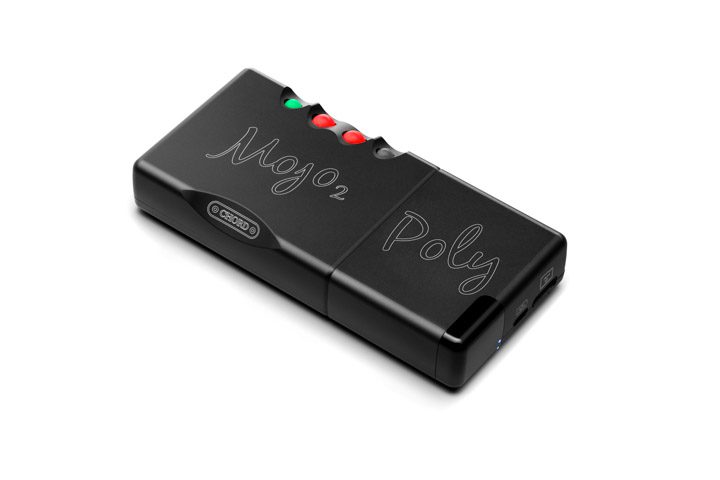
My initial attempts to use the Mojo 2 were thwarted to the extent that a second sample was sent, when that one defeated me I sent a picture to Chord Electronics’ MD and tech guru Matt Bartlett who spotted that the micro USB cable I was using looked a bit skinny, and was possibly not a fully functioning data cable. As it was something I’d found in the bag of random USB cables it was probably a charging cable. Only when I went over to the very short cable supplied in the box (designed for mobile users) was the source able to see the DAC. This hurdle out of the way listening could progress.
I used the Mojo 2 with a Melco N10 digital library, plugged into its USB streaming port, which is admittedly not a typical application but it allowed the DAC to be assessed with a source that was not likely to hold it back or colour the results. The resulting sound using an Audioquest minijack to RCA phono lead into my system was thrilling, intense and very exciting but a little too forward for my tastes. The sound produced being fast and clean but a little too much so with less sophisticated music such as Slint’s fairly edgy Spiderland [Touch and Go]. With smoother material such as Abdullah Ibrahim’s Africa, Tears and Laughter [Enja] it delivered impressive dynamic range thanks to a very low perceived noise floor which let plenty of the quieter details through. A solo violin piece by Amandine Beyer [Outhere] was wonderfully open and immediate, too, but it also showed it was time to try out the tone controls.
It took a while to get used to these, and the manual needed to be at hand every time I did so, but the results were clear and I had plenty of fun trying different combinations of EQ tweaks across the two shelf settings; 125Hz and 3kHz. Each change was clear so long as I jumped two or three dB at a time and having discovered that increasing the 125Hz shelf had a thickening effect I started dialling down the 3kHz and arrived at -4dB as the best option for my system with the Bowers & Wilkins 802 D4s.
Now the balance was similar to the one I get with most mains-powered DACs and allowed Brokeback’s Looks at the Bird [Thrill Jockey] to deliver its full tonal depth, especially from the vibes and double bass. It wasn’t quite as immediate as the flat tone setting but was a lot easier and more relaxed; more importantly there didn’t appear to be any change to timing which is often undermined by DSP. This backs up Chord Electronics’ claim for transparent DSP, a state of affairs that was reinforced with everything I played from the dreamy grooves of Taylor McFerrin to the snappy drive of the Grateful Dead in full flight. The overall performance is extremely good for a DAC at this price and given that I was using fairly basic cables this is not as good as it can get.
There is no shortage of power nor of fine detail, I was impressed on several occasions at the way it could pick out the quieter sounds even when things were getting very busy musically speaking. This happened with ‘Cumberland Blues’ and ‘Gravity’s Angel’ where the organ is easy to follow as are the many effects going on behind the fundamentals of the song.
DAC to the Future?
Whether portable DACs have a future in a world that appears to be dominated by Bluetooth is open to debate but there are plenty of music lovers who realise that cables are small price to pay for great sound on and off the move. I tried the Mojo 2 with a pair of fairly modest Bowers and Wilkins P7 headphones and found that unlike that company’s loudspeakers the tonal balance here was dull through the midband. Bringing the 3kHz shelf back to its zero point did the trick though, it brought the headphones to life, and in a very positive way it has to be said. Now I was able to enjoy a wide range of music at sensible levels, something that has not been the case in the past. I particularly enjoyed Joan Osborne’s ‘Pensacola’ [Relish, Universal] and got a good shot of its emotional impact as well as an insight into its meaning that hasn’t come to the fore when played through the speakers before.
I take my hat off to Rob Watts and Chord Electronics for the way that they have managed to incorporate sophisticated equalisation into the Mojo 2 without compromising its excellent sound quality. Add to that this all metal and impressively well finished little device is made in the UK for a price that competes with the best in the business and you have a bona fide winner.
TECHNICAL SPECIFICATIONS
- Type: High-resolution portable headphone amplifier/DAC
- Inputs: One TOSLink optical input, one micro USB input, one USB C input, one coaxial/dual-data coax via 3.5mm minijack
- Outputs: Two 3.5mm headphone jacks
- Device drivers: Windows
- Digital Filters: 40,960 tap-length digital filters
- Battery: Sufficient power at full charge for 8+ hours of operation. The Mojo 2 can also be powered from a 5V USB power supply
- Frequency Response: Not specified
- Headphone output: 90mW into 300 Ohms, 600mW into 30 Ohms
- Power Output – at 1% distortion: 300 Ohms, 90mW; 30 Ohms, 600mW
- Accessories: USB-A-to-USB-Micro cable, optional Poly wireless streamer
- Dimensions (H×W×D): 21 × 82 × 62mm
- Weight: 185g
- Price: £449
Manufacturer:
Chord Electronics Ltd.
Tel.: +44 (0) 1622 721444
By Jason Kennedy
More articles from this authorRead Next From Review
See all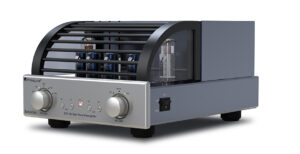
PrimaLuna EVO 100 phono preamplifier
- Apr 22, 2024
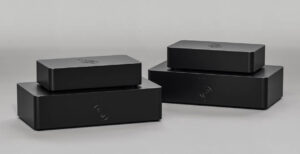
Reiki Audio SuperSwitch Master Pro + Servant Pro
- Mar 27, 2024
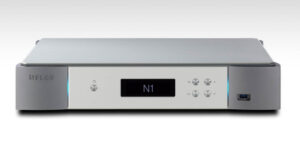
Melco Audio N1-S38 music server
- Mar 27, 2024








